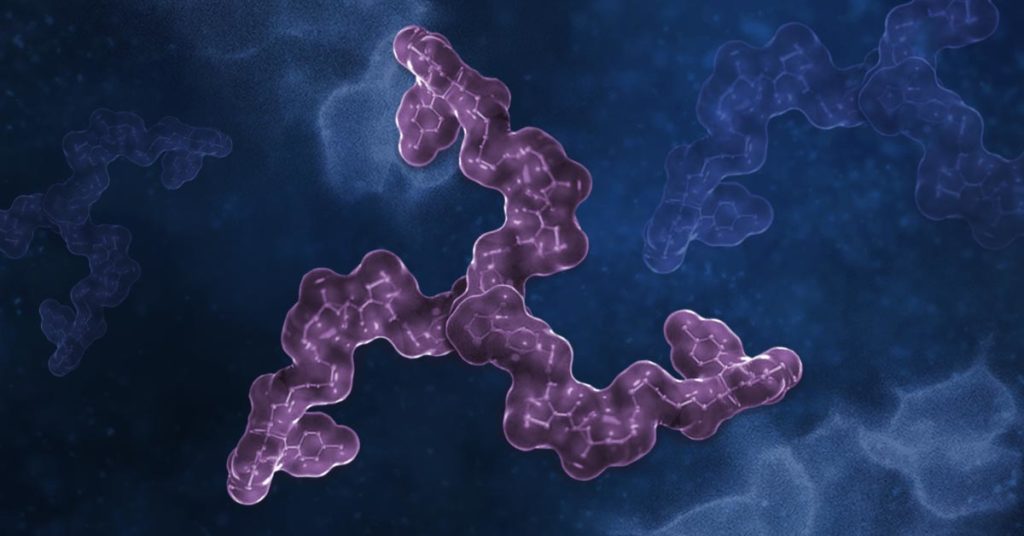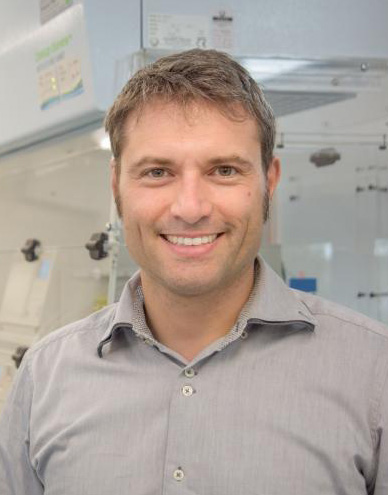The University of Dundee in Scotland and Promega Corporation have developed a new approach to targeted protein degradation: a revolutionary “three-headed hydra” with a unique three-pronged structure that packs a powerful punch.

Targeted protein degradation is an advanced method of drug therapy involving the removal of problematic proteins from within a cell. The most prevalent technology used in this approach is a molecular compound called a proteolysis-targeting chimera, or PROTAC. These compounds are typically bivalent, consisting of two ligands, or heads, that can bind to the protein of interest and the cell’s innate disposal system, a protein complex called ubiquitin E3 ligase.
To dispose of the target protein, the PROTAC induces the formation of a ternary complex, wherein the target is joined with the E3 ligase. The E3 ligase then tags the target with the protein ubiquitin, a process called ubiquitination. Ubiquitination prompts the cell to ferry the offending protein to the garbage disposal, or the proteasome, where it is degraded.
The promise of protein degradation lies in a better drug response at lower doses, thereby treating more diseases with fewer undesirable side effects. This method was initially proposed as a way to treat conditions that are considered “undruggable”, with implications in drug treatment that could reach a wide range of troublesome protein targets, including those that cause cancer.
PROTACs are being explored in disease therapy across a variety of specialties, including oncology and immunology. Cutting-edge research by the University of Dundee’s Centre for Targeted Protein Degradation (CeTPD) and Promega Corporation has opened the door to an entirely new class of PROTAC: the trivalent PROTAC. This “three-headed hydra” is made all the more potent by the presence of three protein-binding ligands rather than two.
“Our trivalent PROTAC is more potent. What that means is that it works the same but at much lower concentrations, which means you can use a lower dose and achieve the same functional effect,” says Director of the University of Dundee CeTPD Alessio Ciulli, Ph.D. “It also degrades its target protein faster and to a larger extent. This means that it can achieve even better and more profound responses.”
A lot of things must go right for targeted protein degradation to work, and success is achieved through a cascade of events. Two proteins that don’t normally interact must be brought into a productive ternary complex that effectively positions the target protein for ubiquitination. The ternary complex needs to be stable and the target protein needs to remain connected to the PROTAC for enough time for ubiquitination to occur.
In their study, researchers hypothesized that a PROTAC with an additional ligand, and therefore a higher binding valency, could exhibit improved protein degradation. However, they were uncertain of how exactly this would impact the mechanism of action.
“In the initial concept and design, we hoped that all three warheads of the trivalent PROTAC would be engaged simultaneously, but this remained to be proven,” said Danette Daniels, Ph.D., Research and Development group leader at Promega.
In order to test their hypothesis, researchers designed a PROTAC composed of protein inhibitors that would target the bromodomain and extra-terminal domain (BET) family member proteins BRD2, BRD3 and BRD4, chosen due to their role in cancer pathogenesis. They compared the performance of the trivalent PROTAC in degrading these proteins with the performance of traditional smaller compounds, including bivalent PROTACs and inhibitors, and found that the trivalent PROTAC was indeed more potent and outperformed its bivalent counterparts. The trivalent PROTAC showed higher avidity, or binding strength, toward the target given the increased valency, which in turn bolstered the residence time of the PROTAC binding to the target protein.
Unexpectedly, researchers observed further increased residence time associated with ternary complex formation. This increased “stickiness”, like that of glue, correlated with biochemical studies showing a high degree of cooperativity, or affinity for binding, within the ternary complex. This combined avidity and cooperativity led to highly efficient ubiquitination and degradation of the target protein at both high and low levels of the trivalent PROTAC, thus expanding its dosing window.

“Both [avidity and cooperativity] have been previously leveraged separately to improve potency and specificity of small molecules, but here we have put them together to achieve really potent degradation,” said Daniels.
A key obstacle to using PROTACs in drug therapy is cell permeability. Even with a bivalent PROTAC, the larger and more complex the compound, the more difficulty it tends to have crossing the cell membrane. Researchers in this study wondered whether trivalent PROTACs would be even less permeable. However, their research showed that trivalent PROTACs were just as permeable as a bivalent PROTAC, and they even demonstrated through pharmacokinetic studies in mice that trivalent PROTACs can be used in vivo.

“We believe that our data suggests, and therefore we speculate, that our new trivalent [PROTAC], because of its much-improved mechanism, could circumvent some of the limitations of the current degraders, for example the acquired resistance of cancer cells. If PROTACs can be glues, we made them super glues,” said Ciulli.
In part, Daniels, Ciulli and their collaborators achieved this work thanks to the power of bioluminescent assay technology. Daniels and Ciulli recently spoke at Discover Glo, a conference hosted by Promega in mid-September 2021 that explored the past, present and future applications of luciferase technology, in honor of the 30th anniversary of Promega’s first luciferase assay.
In her own presentation, Daniels talked more about the history and evolution of targeted protein degradation.
“It’s really been a stepwise process over the years, and everything throughout the years was very important for setting the foundation for the next jump…all to be able to be where we are today, watching degradation happen in a live cell and teasing apart the mechanisms, the interactions, whether it be with proteins or small molecules, all inside the cell, all in real time,” said Daniels.
The development of a trivalent PROTAC has numerous implications for drug discovery down the road. Induced proximity between proteins could be used to achieve outcomes beyond degradation. Improved avidity may allow researchers to go after particularly tricky protein targets. With their research, Daniels, Ciulli and their team have broadened the landscape of therapeutic protein degradation and have opened the door to new possibilities.
Want to learn more about targeted protein degradation and luciferase technology? Visit the Discover Glo 2021 page and register now to watch presentations by Daniels, Ciulli and more.
Read additional articles about protein degradation and PROTACs on our blog.
Latest posts by AnnaKay Kruger (see all)
- Studying Episodic Memory through Food-Caching Behavior in Birds - April 16, 2024
- A Silent Killer: Tracking the Spread of Xylella fastidiosa - March 27, 2024
- The Tiniest Test Tube: Studying Cell-Specific Protein Secretion - February 15, 2024

One thoughtful comment